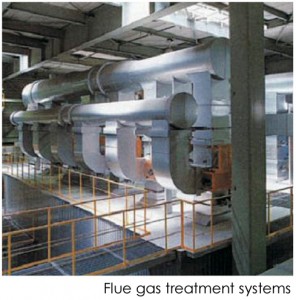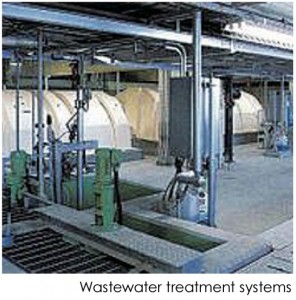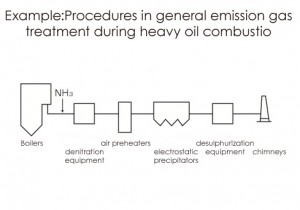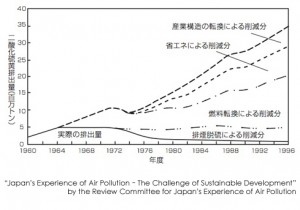Measures Initiated by Businesses to Overcome Pollution Problems
In response to the local community’s increased awareness of the environment and stricter government regulations, businesses have taken active steps to invest in pollution prevention measures. This investment by businesses has resulted in the development of various pollution prevention fields, and laid the technological foundation for antipollution measures.
Example of technical measures adopted by companies
Installation of pollution prevention systems
So-called“end-of-pipe technology” was introduced in the final processing stage to treat pollutants generated during production.
Introduction of a flue gas treatment system
Dust collection, desulfurization, and denitrification systems were introduced to remove pollutants in flue gas.

Introduction of wastewater treatment system
Systems for eliminating nitrogen, phosphorus, and toxic substances from wastewater discharged by factories and worksites were introduced.

Improvement in the quality of fuel used
Reduction of the sulfur content in heavy oil
To increase the supply of heavy oil with lower sulfur content, the company increased its heavy oil desulfurization capacity.
Fuel conversion to liquefied natural gas
The fuel used in thermal power generation was converted from heavy oil to liquefied natural gas which is free of sulfur.

Improvement in manufacturing processes
Companies have made efforts to develop and introduce cleaner production methods to improve the manufacturing process itself. In addition to improving the environment, these initiatives have spawned economically-efficient, superior environmental technologies.
Introduction of energy-saving technologies
Energy–saving technology was introduced for more efficient combustion.
Factoral analysis of sulfur dioxide emission reductions in Japan


Economic and Labor Affairs Bureau
Kawasaki City
1, Miyamoto-honcho, Kawasaki-ku, Kawasaki City, Japan, 210-8577
Tel:+81-44-200-2335
e-mail:28ecotech@city.kawasaki.jp

